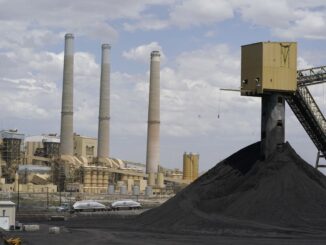
Developing countries face significant challenges in achieving their primary goals of poverty alleviation, reducing unemployment, and minimizing inequality.
About 80% of the global population of 8 billion people live in less developed countries. Much of Africa and Southeast Asia are prime examples of this, as are the Pacific Ocean Island states. The people in those countries might live on less than $10 per day, but the greater problem is that they have little or no access to reliable electricity or to the myriad of products manufactured using fossil fuels and their derivatives. The “green” agendas of the developed world are threatening to never allow them access to it.
It’s shocking that “GREEN” policymakers are oblivious to two basic facts driving their ignorance of the forthcoming energy crisis.
- No one uses crude oil in its raw form. ‘Big Oil’ only exists because of humanity’s addiction to the products and fuels made from oil.
- ‘Renewables’ only exist to generate occasional electricity, as they cannot make any products
Fossil fuels, on the other hand, manufacture everything for the 8 billion people on this planet, including more than 6,000 products and transportation fuels.
These developing countries face significant challenges in achieving their primary goals of poverty alleviation, reducing unemployment, and minimizing inequality. Central to meeting these objectives is the need to accelerate and sustain economic growth.
A stable and secure supply of continuous, uninterruptible, and dispatchable electricity is a non-negotiable requirement for sustainable economic growth. The concept of dispatchable electricity refers to the ability to provide a reliable and consistent power supply at a competitive price, precisely when and where it is needed. This critical need raises questions about the suitability of renewable electricity sources, such as wind and solar, for developing countries’ long-term energy strategy.
Dispersed generation of electricity by wind and solar power generation facilities are often located far from the areas where electricity demand is highest, necessitating costly expansions of the grid.
> Waste: Wind and solar installations have shorter operational lives compared to coal and nuclear plants, leading to higher waste disposal challenges, especially given the toxic materials involved.
> Other relative cost issues: Not considered are the numerous by-products derived from coal and other fossil fuels. These are numerous and extremely valuable. The human standard of living has increased dramatically and has been maintained since the discovery and use of coal and other fossil fuels and their by-products. These by-products are not available from renewables.
> Changing economies to a net zero electricity target has been estimated by many experts to be between 2 and 3 trillion US dollars per annum. Bjorn Lomburg recently wrote, “Globally, we are already spending almost $2 trillion annually to try to force an energy transition.”
The experiences of others, such as Germany with its “Energiewende” policy and California with its “Green New Deal” and “Net-Zero” policies, serve as cautionary tales. Germany and California’s shift away from coal and nuclear towards renewables has led to the highest electricity prices in Europe and the continental United States, adversely affecting their manufacturing sector and compromising their energy sovereignty. Higher electricity prices in Europe, Australia, and California are excellent examples of the price increase in economies based primarily on renewables.
Meanwhile, many poorer developing countries, including India, Bangladesh, Indonesia, China, and the ASEAN countries, focus on continuing their development and industrialization programs. While they have renewable programs, these countries have their baseload electricity provided primarily through High-Efficiency, Low-Emissions (HELE) coal-fired, gas, and nuclear power stations to support their rapid industrialization and economic growth. That is partly why they are the world’s high-economic-growth economies.
For developing economies, the availability of cost-effective, dispatchable baseload electricity is crucial for the growth of electricity-intensive industries that can drive economic progress and improve living standards.
This underscores the need to address the proverbial elephant in the room without the ideological haze of international climate agreements or theoretical doomsday hypotheses. There is a real need here and now to apply pragmatism and do what is sensible for a reliable electricity supply.
In the interim, older power plants should be refurbished to maintain supply stability. Investment in unreliable and unproven renewable electricity sources should be reconsidered, as they are ill-suited to meeting developing country’s long-term economic demands, particularly in the mining, manufacturing, and agricultural sectors. Furthermore, over-reliance on imported refined products could jeopardize developing country’s energy sovereignty and exacerbate balance of payments issues.
A Vision for the Future: Nuclear Power
- One proposed solution is the development of nuclear power stations, which could bring significant benefits to developing countries. Such projects would not only boost electricity supply but also support regional development through enhanced infrastructure, increased economic activity, and the creation of jobs. Local municipalities could see immediate benefits in terms of infrastructure expansion, including roads, water provision, and housing for workers.
- The nuclear projects exemplify the kind of forward-thinking investment in reliable, cost-effective electricity infrastructure that is necessary to support developing country’s future economic growth.
The future of electricity in developing countries needs to focus on technologies that are efficient and effective. In developing countries, these are High-Efficiency, Low-Emissions (HELE) coal-fired, gas and nuclear power stations. It is a separate exercise to ensure that all technologies are kept free of corruption at all levels and run efficiently. It is the government’s role to give priority to the engine rooms of existing and future growth and employment in the economy.
Electricity is a major necessity in developing countries such as South Africa for business and associated development, which is required for future economic growth.
Nuclear and HELE coal represent the most viable options for providing the reliable, dispatchable baseload electricity needed to support the country’s industrial and economic development. Governments must focus on repairing the damage to investor confidence caused by ongoing electricity disruptions and ensuring the introduction of adequate, competitively priced electricity supplies to sustain future growth.
We give you energy news and help invest in energy projects too, click here to learn more





